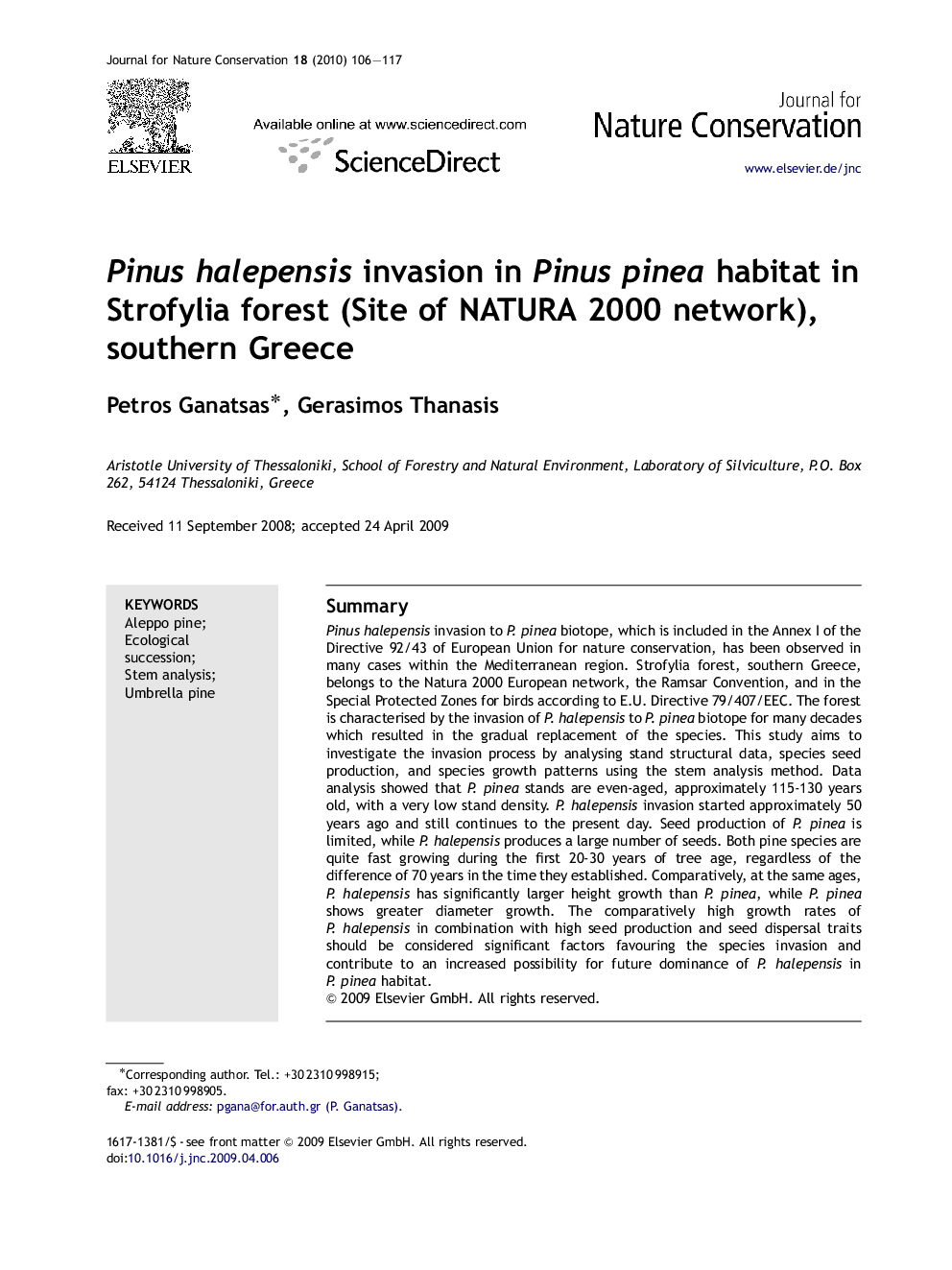| Article ID | Journal | Published Year | Pages | File Type |
|---|---|---|---|---|
| 4400185 | Journal for Nature Conservation | 2010 | 12 Pages |
Abstract
Pinus halepensis invasion to P. pinea biotope, which is included in the Annex I of the Directive 92/43 of European Union for nature conservation, has been observed in many cases within the Mediterranean region. Strofylia forest, southern Greece, belongs to the Natura 2000 European network, the Ramsar Convention, and in the Special Protected Zones for birds according to E.U. Directive 79/407/EEC. The forest is characterised by the invasion of P. halepensis to P. pinea biotope for many decades which resulted in the gradual replacement of the species. This study aims to investigate the invasion process by analysing stand structural data, species seed production, and species growth patterns using the stem analysis method. Data analysis showed that P. pinea stands are even-aged, approximately 115-130 years old, with a very low stand density. P. halepensis invasion started approximately 50 years ago and still continues to the present day. Seed production of P. pinea is limited, while P. halepensis produces a large number of seeds. Both pine species are quite fast growing during the first 20-30 years of tree age, regardless of the difference of 70 years in the time they established. Comparatively, at the same ages, P. halepensis has significantly larger height growth than P. pinea, while P. pinea shows greater diameter growth. The comparatively high growth rates of P. halepensis in combination with high seed production and seed dispersal traits should be considered significant factors favouring the species invasion and contribute to an increased possibility for future dominance of P. halepensis in P. pinea habitat.
Related Topics
Physical Sciences and Engineering
Earth and Planetary Sciences
Earth and Planetary Sciences (General)
Authors
Petros Ganatsas, Gerasimos Thanasis,
